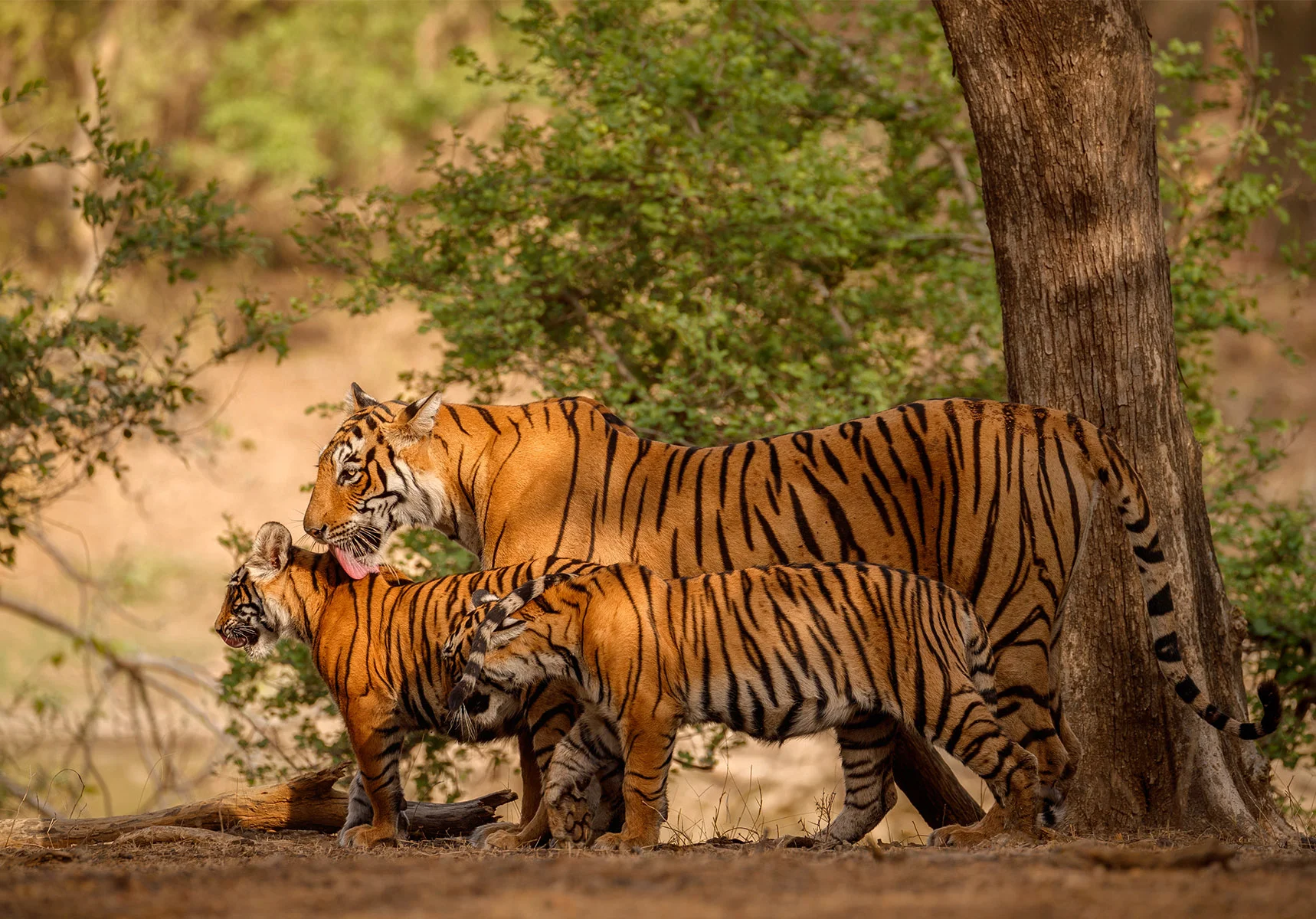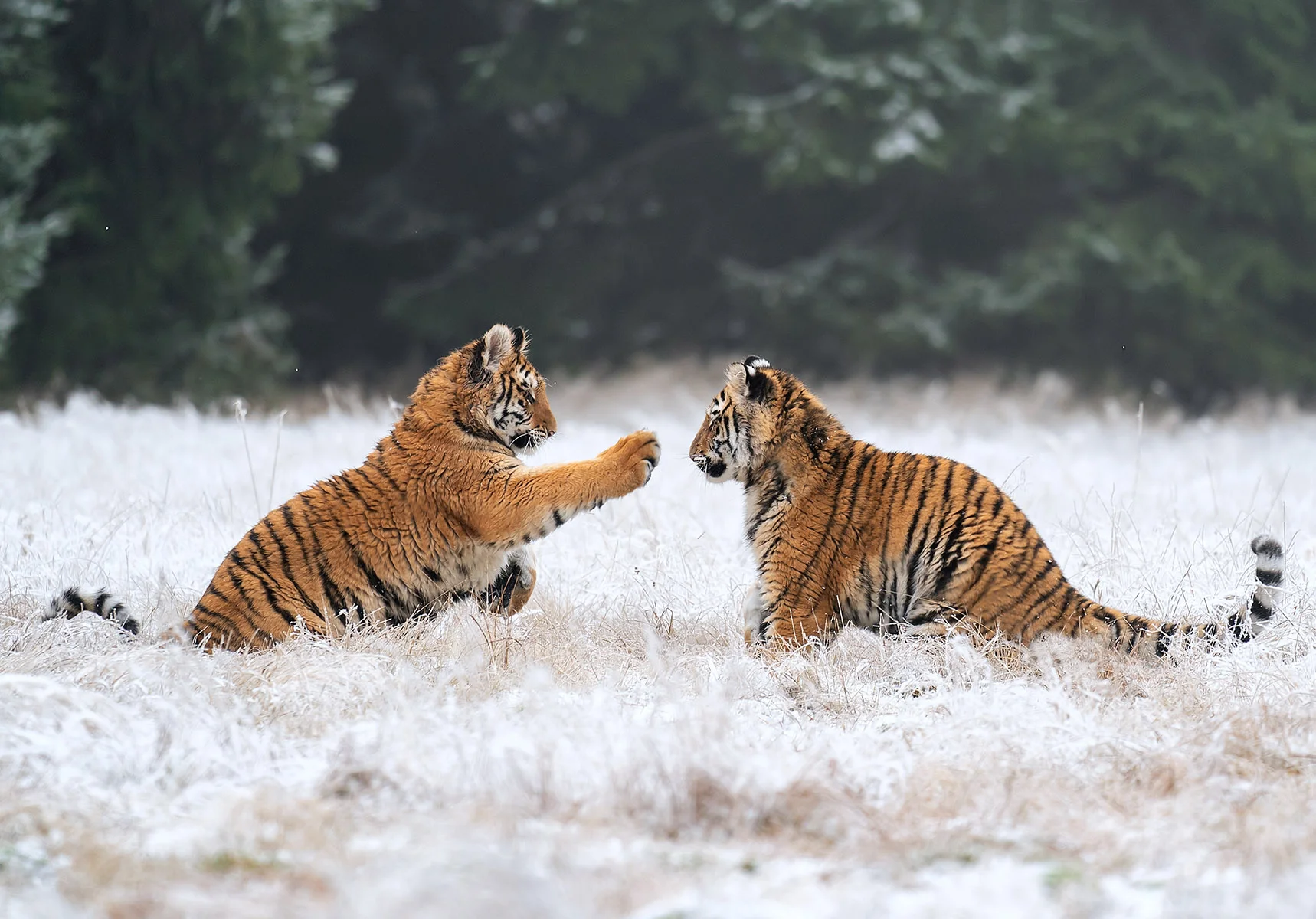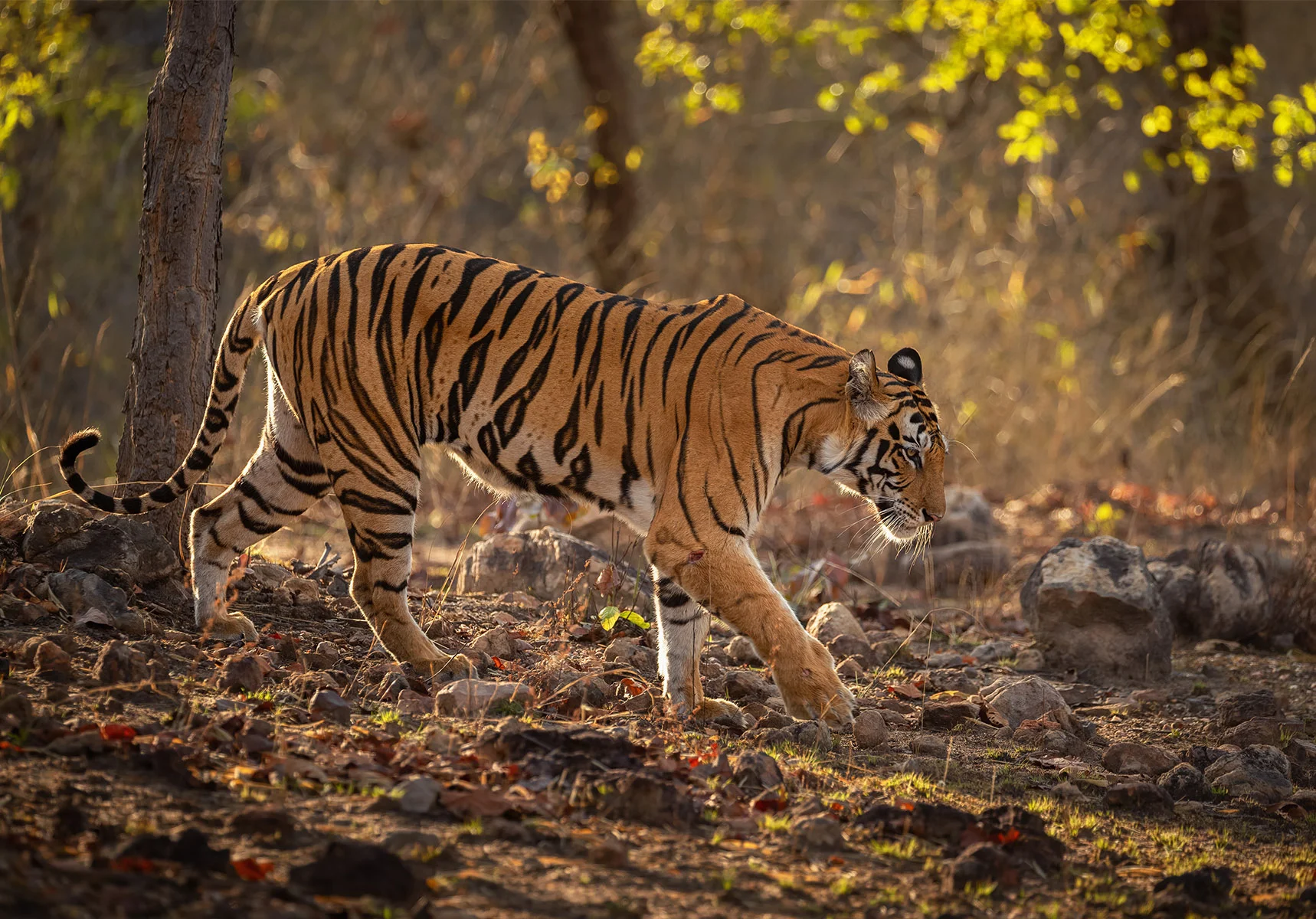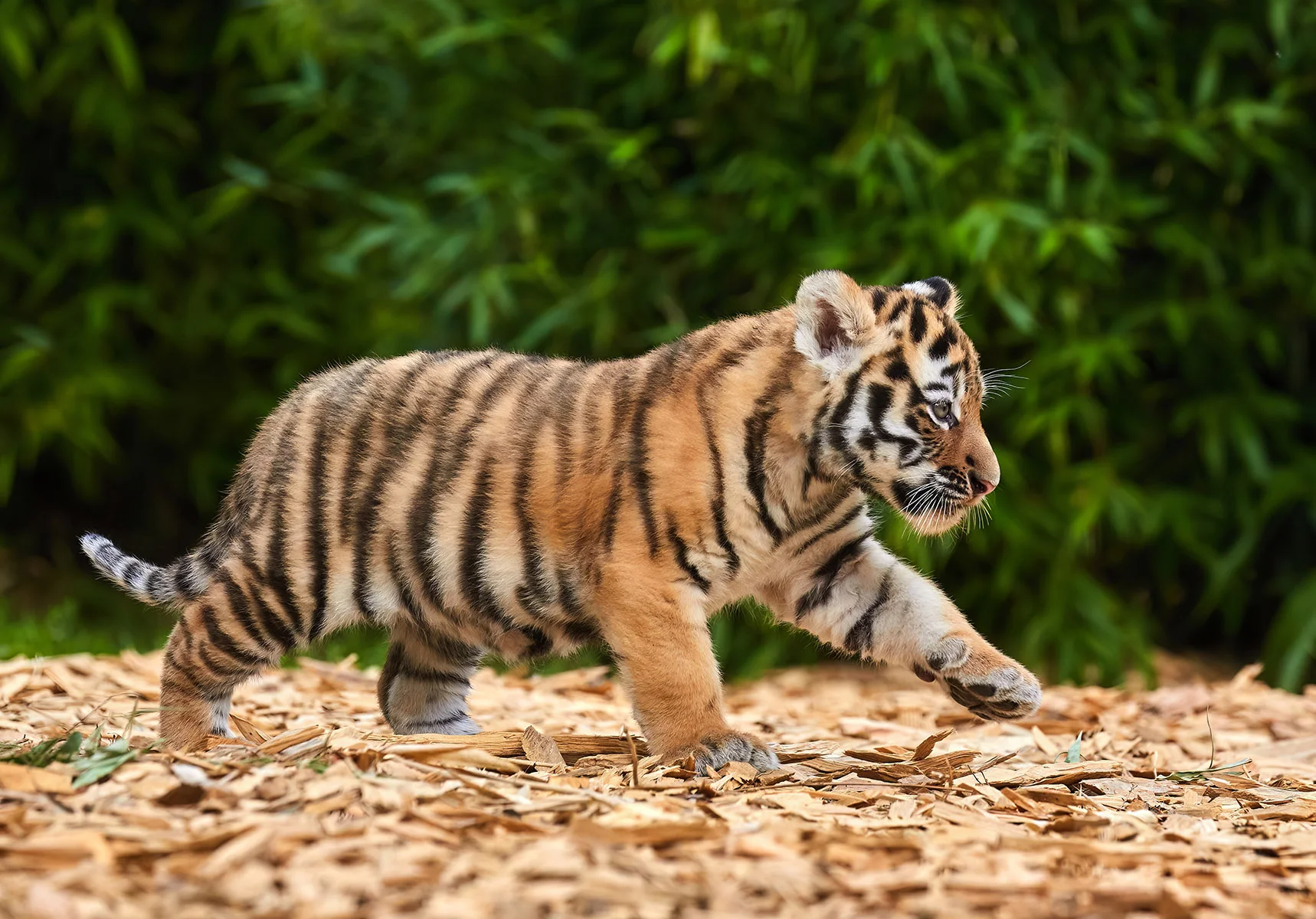Meet Tigris! His name comes from the ancient word ‘Tigra,’ meaning sharp or pointed—a fitting tribute to his sleek stripes and sharp instincts.
Tigris’s story began millions of years ago in the wild landscapes of Asia. From dense jungles to snowy forests, his ancestors conquered it all, adapting to thrive in some of the most challenging environments on Earth. Today, Tigris represents the legacy of six incredible tiger subspecies, each as unique as the habitats they call home.
With his striking orange coat and bold black stripes, Tigris is the ultimate symbol of strength and solitude. But even the mightiest apex predator dreams of a future where his jungle kingdom stays untamed and alive.
Ready to prowl alongside Tigris? Let’s step into his striped world and discover his wild spirit!

Origin
Native to Asia, tigers inhabit diverse ecosystems, including tropical forests, grasslands, mangroves, and taiga regions. They are found in countries such as India, Russia, Indonesia, and Malaysia.
Risk Level
High, as tigers face severe threats from habitat loss, poaching for their skins and body parts, and human-wildlife conflict. Despite conservation efforts, some populations remain critically endangered.
Species
Six extant subspecies: Bengal tiger (Panthera tigris tigris), Siberian tiger (Panthera tigris altaica), Indochinese tiger (Panthera tigris corbetti), Malayan tiger (Panthera tigris jacksoni), South China tiger (Panthera tigris amoyensis – possibly extinct in the wild), and Sumatran tiger (Panthera tigris sumatrae).
Status
Tigers are classified as endangered by the IUCN Red List. Global populations are estimated at around 3,900 in the wild. Conservation initiatives include anti-poaching patrols, habitat restoration, tiger corridors, and programs like India’s Project Tiger and Russia’s Amur Tiger Program.
Why is ‘Tigris’ important to the eco-system?
Tigers like Tigris are nature’s stripy forest caretakers! By hunting herbivores like deer and wild boar, they help keep these populations in balance, which prevents overgrazing and allows forests to thrive.
Tigris and her tiger family are also top predators, which means they play a key role in maintaining the health of their entire ecosystem. Without tigers, the balance of life in the forest could collapse, affecting countless other species and even the plants and rivers.
Protecting Tigris’s lush home is important—not just for her, but for every living thing in her ecosystem. Plus, healthy forests absorb carbon and fight climate change.

Measuring the Risk of Extinction
A species is considered critically endangered if it has lost 80% or more of its geographic range, and has a greater than 50% chance of extinction over the next 10–100 years.
There are currently no tiger subspecies categorised as Critically Endangered. However, certain isolated populations, such as the South China tiger, are on the verge of extinction, with no confirmed sightings in the wild for decades. Extreme habitat loss and poaching have decimated their numbers, leaving only a few individuals in captivity. Without immediate and aggressive conservation measures, these populations may disappear entirely.
According to the IUCN, 0 tiger subspecies are currently categorised as Critically Endangered. [source]
A species is considered endangered if it has lost more than half of its geographic range, and has a greater than 20% chance of extinction over the next 10–100 years.
Tigers as a species are classified as Endangered. Subspecies like the Bengal tiger and the Amur tiger face grave threats from habitat destruction, poaching, and human-wildlife conflict. Global tiger populations have plummeted by over 90% in the last century, with fewer than 4,000 individuals left in the wild. Conservation efforts, such as anti-poaching patrols and habitat restoration, are crucial to their survival.
According to the IUCN, all six remaining tiger subspecies are considered Endangered. [source]
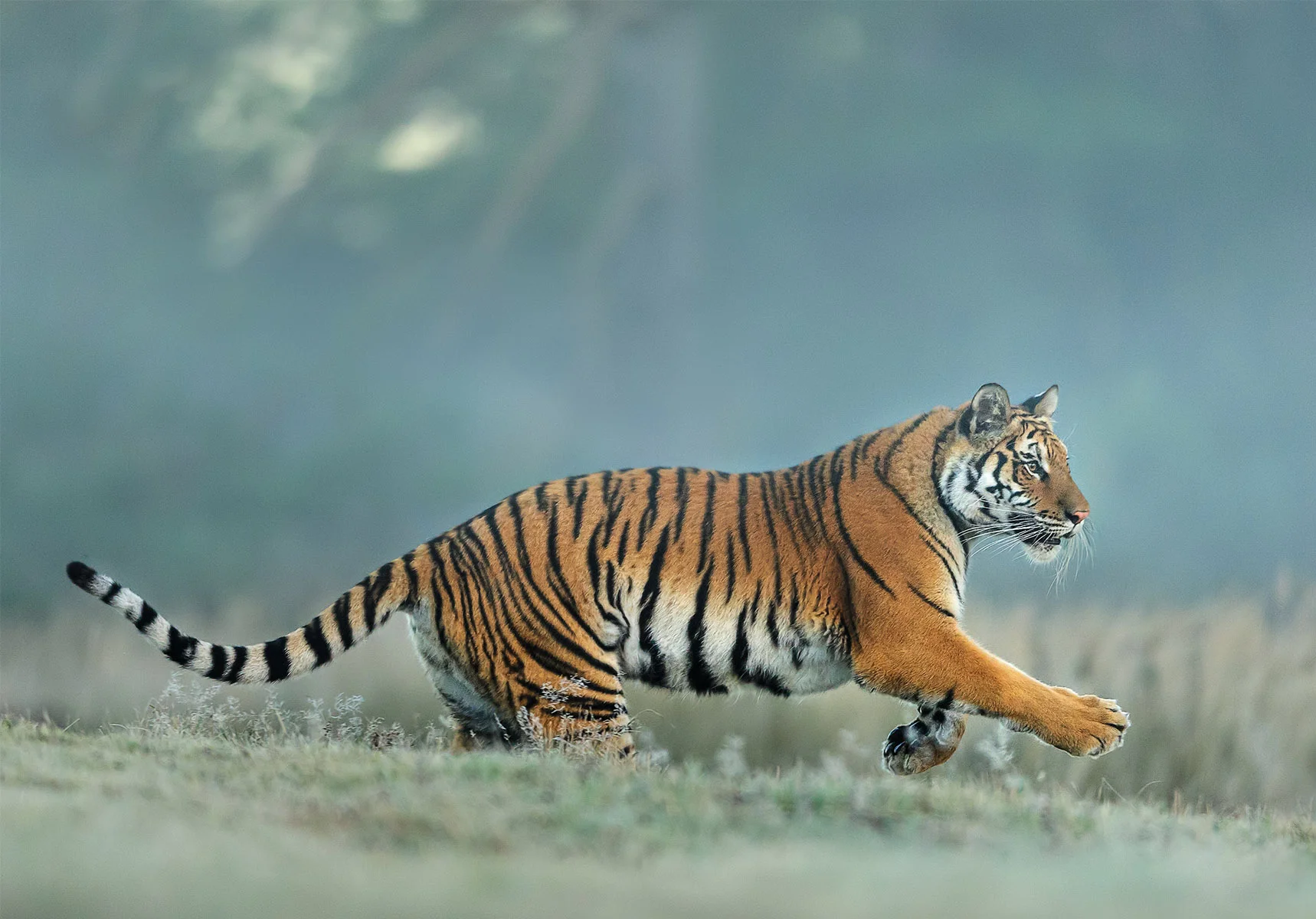
A species is considered vulnerable if there is a greater than 10% chance that it goes extinct in the wild within 100 years.
No tiger populations are currently classified as Vulnerable. Despite small successes in conservation increasing tiger numbers in certain regions, such as India and Nepal, the overall species remains under significant threat. Continued efforts are needed to stabilize their populations.
According to the IUCN, 0 tiger subspecies are categorized as Vulnerable. [source]
A species is close to meeting the definition of endangered, vulnerable, or critically endangered based on recent trends.
There are no tiger subspecies currently classified as Near Threatened. Tigers remain under significant pressure across their range, and most populations face threats that keep them in higher-risk categories.
According to the IUCN, 0 tiger subspecies are categorized as Near Threatened. [source]
A species is widespread, abundant, and not threatened with extinction.
There are no tiger subspecies classified as Least Concern. The species’ overall population is too small and fragmented, and all subspecies require ongoing conservation efforts to prevent further declines.
According to the IUCN, 0 tiger subspecies are considered Least Concern. [source]
Measuring the Risk of Extinction
A species is considered critically endangered if it has lost 80% or more of its geographic range, and has a greater than 50% chance of extinction over the next 10–100 years.
There are currently no tiger subspecies categorized as Critically Endangered. However, certain isolated populations, such as the South China tiger, are on the verge of extinction, with no confirmed sightings in the wild for decades. Extreme habitat loss and poaching have decimated their numbers, leaving only a few individuals in captivity. Without immediate and aggressive conservation measures, these populations may disappear entirely.
According to the IUCN, 0 tiger subspecies are currently categorized as Critically Endangered. [source]
A species is considered endangered if it has lost more than half of its geographic range, and has a greater than 20% chance of extinction over the next 10–100 years.
Tigers as a species are classified as Endangered. Subspecies like the Bengal tiger and the Amur tiger face grave threats from habitat destruction, poaching, and human-wildlife conflict. Global tiger populations have plummeted by over 90% in the last century, with fewer than 4,000 individuals left in the wild. Conservation efforts, such as anti-poaching patrols and habitat restoration, are crucial to their survival.
According to the IUCN, all six remaining tiger subspecies are considered Endangered. [source]
A species is considered vulnerable if there is a greater than 10% chance that it goes extinct in the wild within 100 years.
There are no tiger subspecies currently classified as Near Threatened. Tigers remain under significant pressure across their range, and most populations face threats that keep them in higher-risk categories.
According to the IUCN, 0 tiger subspecies are categorized as Near Threatened. [source]
There are no tiger subspecies currently classified as Near Threatened. Tigers remain under significant pressure across their range, and most populations face threats that keep them in higher-risk categories.
According to the IUCN, 0 tiger subspecies are categorized as Near Threatened. [source]
There are no tiger subspecies classified as Least Concern. The species’ overall population is too small and fragmented, and all subspecies require ongoing conservation efforts to prevent further declines.
According to the IUCN, 0 tiger subspecies are considered Least Concern. [source]
100% Recycled: Head to Toe!

The fabric
We scour the best recycled material fabrics so that our plush always feels premium and soft to the touch!
Hang Tag
The Hangtag is made of recycled paper and attached with a Recycled Polyamide attacher.
Embroidery
Even our threads are recycled! They are extensively used in creation of adorable eyes!
Fiber Fill
What’s inside? Well it’s recycled, super soft, hypo-allergenic fiber!
Call of the Wild: Learning Den
Let’s get inspired to reconnect with nature! Discover cool facts about amazing animals, their families, and why they’re so important for keeping our planet wild and beautiful. It’s time to learn, explore, and take action to protect the incredible creatures that share our world.
15
100
700
Ready to Pounce?
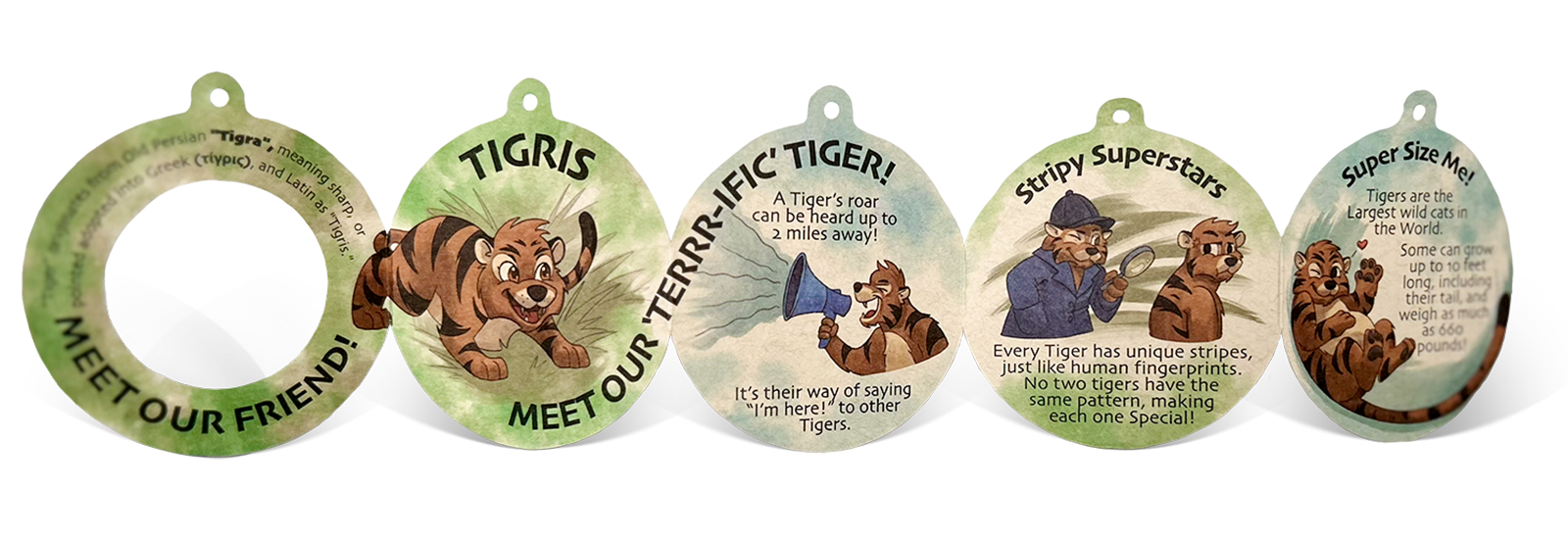
Fun Facts: Nature Nuggets!

A Tiger’s roar can be heard up to 2 miles away! It’s their way of saying “I’m here!” to other Tigers.

“Stripy Superstars” Every Tiger has unique stripes, just like human fingerprints. No two tigers have the same pattern, making each one Special!

“Super Size Me!” Tigers are the Largest wild cats in the World. Some can grow up to 10 feet long, including their tail, and weigh as much as 660 pounds!

